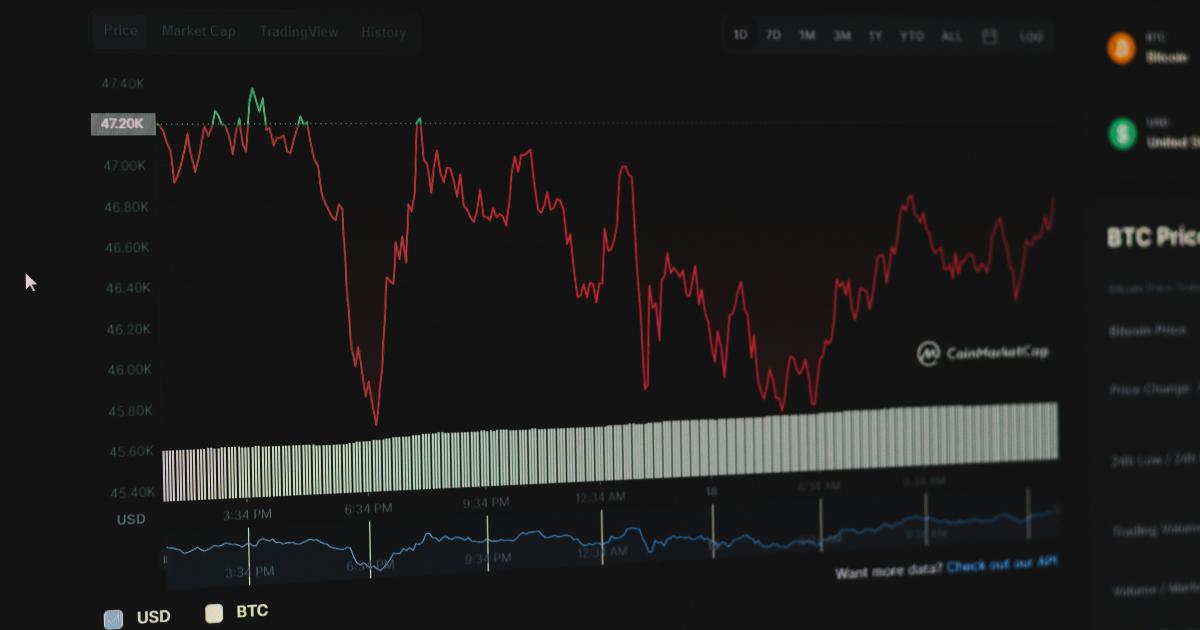How Position Sizing Affects Risk Management

In the world of trading and investment, understanding how position sizing affects risk is crucial. A well-executed strategy considers not just what assets to buy or sell, but how much to allocate to each position to manage risk effectively. This article delves into the intricate relationship between position sizing and risk management, offering a comprehensive analysis that spans theoretical frameworks, practical applications, and real-world examples. By exploring diverse strategies and expert recommendations, we aim to equip traders and investors with insights that empower them to navigate markets with confidence and well-managed exposure.
Introduction to Position Sizing and Risk Management
Position sizing is the art of determining how much capital to allocate to a particular trade or investment based on your individual risk tolerance, account size, and market volatility. It plays an influential role in risk management by determining the impact of each trade on an overall portfolio. Improper position sizing can lead to overexposure, while a methodical approach can safeguard your capital during volatile market conditions.
In trading and investment, risk management revolves around the strategic reduction of potential losses while striving for consistent returns. Even the most promising strategies can suffer from unforeseen market shifts if risk is not addressed adequately. Therefore, understanding how “position sizing affects risk” becomes an essential aspect of any robust investment plan. This article details the various methods, benefits, and considerations of position sizing, and discusses the myriad ways it supports risk management.
Fundamentals of Position Sizing
Position sizing is not a one-size-fits-all approach; it requires careful consideration of several factors that influence trade outcomes. Before diving into advanced risk management techniques, it is important to grasp the fundamental components of position sizing.
Determining Position Size
The process begins with a clearly defined risk percentage per trade. Many traders advise risking a small percent of the total account balance on any single trade—commonly 1-2%. For example, if your account has $10,000 and you decide to risk 1%, each trade’s potential loss should not exceed $100. This strategy minimizes the possibility of a single loss dramatically impacting the portfolio.
Risk per trade is calculated through the following relationship:
Risk per Trade = (Entry Price - Stop Loss Price) x Position Size
Adjusting these components helps account for varying market conditions. A wider stop loss may necessitate a smaller position size, while a tighter stop loss allows for a larger one if the trader’s confidence in the trade is high.
Considering Market Volatility
Market volatility is a measure of how drastically and rapidly asset prices change. High volatility suggests that asset prices can swing significantly within short periods. In such markets, traders must adjust their position sizing to account for increased risk. Lower volatility markets might allow for larger positions since the risk of sudden price shifts is minimized.
Traders use indicators such as the Average True Range (ATR) to quantify volatility. By incorporating these metrics into their calculations, they adjust position sizes dynamically. This balancing act helps ensure that even when the market experiences large swings, the overall risk remains within acceptable limits.
The Role of Leverage
Leverage amplifies both gains and losses. When leveraged trading, even minor miscalculations in position sizing can lead to outsized losses. Hence, an understanding of how position sizing affects risk is particularly crucial for leveraged positions. Traders need to consider margin requirements and potential drawdowns as leverage increases overall exposure.
Risk management in leveraged situations demands meticulous monitoring of position sizes. A small percentage error in calculating the position size can turn into a significant risk if the position is highly levered. Consequently, effective risk management often involves reducing the position size when leverage is used, to avoid liquidation and catastrophic capital loss.

Position Sizing Affects Risk: Strategic Implementation
Understanding that position sizing affects risk is only the first step. The real challenge lies in implementing strategic position sizing to manage risk effectively. In this section, we explore various strategies and how they interact with overall risk management techniques.
Fixed Fractional Method
The fixed fractional method is a popular and straightforward risk management technique. This method involves risking a fixed percentage of the account on every trade. For instance, if a trader decides to risk 2% per trade, that percentage remains constant regardless of the trade conditions.
Advantages of the Fixed Fractional Method:
- Consistency: A fixed percentage approach gives a predictable framework for risk per trade.
- Adaptability: As the account grows, the dollar amount risked increases proportionally.
- Discipline: It forces traders to maintain a level of discipline and ensures that no single trade significantly endangers the portfolio.
Challenges:
- Reduced Flexibility: The method may not be adaptable to different market conditions equally.
- Over-Leverage: In some cases, particularly in high-volatility markets, even a fixed percentage might expose traders to undue risk if not computed accurately.
Volatility-Adjusted Position Sizing
Volatility-adjusted position sizing incorporates market volatility metrics to determine how much to risk per trade. Traders using this method often rely on the ATR (Average True Range) or similar volatility indicators. Under this approach, positions in highly volatile assets are sized smaller than those in more stable assets.
The rationale is simple: if an asset is moving more dramatically, the risk per pip or per point is higher, warranting a smaller position. Conversely, assets with lower volatility can support larger positions. This adaptive method ensures that trades remain within a safe risk envelope, regardless of the underlying asset’s behavior.
Advantages:
- Dynamic Adjustments: Positions are scaled according to real-time market volatility.
- Improved Risk Control: Lower positions during high volatility limit potential losses.
- Tailored Exposure: Investments align more closely with the unique risk profile of each asset.
Challenges:
- Complexity in Calculation: Requires continuous monitoring and mathematical adjustments.
- Data Dependency: Accurate and real-time data is essential for effective implementation.
Kelly Criterion
The Kelly Criterion is a formula that helps traders calculate the optimal size of a series of bets to maximize long-term wealth. It considers probability and payoff ratios and is used to determine the fraction of the capital to risk. Although primarily used in gambling, it has been adapted for trading.
Formula:
Optimal Size Fraction = W - [(1 - W) / R]
Where:
- W is the win probability.
- R is the win/loss ratio.
The Kelly Criterion advises on a position’s sizing based on expected outcomes. However, many traders recommend using only a fraction of the Kelly suggestion, as using the full value may lead to overly aggressive positions.
Advantages:
- Theoretical Foundation: Provides a mathematical justification for position sizing.
- Maximizes Growth: Helps in balancing risk with potential for growth in a statistically favorable manner.
Challenges:
- Overly Aggressive: Full Kelly can lead to high volatility in returns.
- Dependency on Accurate Inputs: Requires precise calculation of probabilities and returns.
Real-World Example: Implementing Position Sizing Strategies
Consider a trader forecasting a particular stock to rise. With an account value of $50,000, they decide to risk 1% of the account per trade, equating to $500. If the stop loss is set at 10% below the entry price, position sizing becomes crucial. The trader calculates the appropriate position size based on the distance between the entry price and the stop loss:
Position Size = Dollar Risk / (Entry Price x Stop Loss Percentage)
In this example: Position Size = $500 / (Stock Price x 0.10)
If the stock price is $100, the position size becomes: Position Size = $500 / $10 = 50 shares
This calculation shows how a clear understanding of risk parameters leads to effective position sizing, ensuring that even in the worst-case scenario, the trader loses only a nominal portion of their account.

Integration with Broader Risk Management Practices
Position sizing is one cornerstone of risk management. However, for a holistic approach, it must complement other risk control methodologies. Below are several essential practices that dovetail with effective position sizing.
Diversification
Diversification involves spreading investments across various sectors, instruments, and geographic regions to mitigate risk. Position sizing works alongside diversification by ensuring that each individual position conforms to an overall risk management strategy. Even if one asset underperforms, a diversified portfolio cushioned by appropriate position sizes will likely maintain a balanced risk-reward profile.
Applications of diversification include:
- Investing across asset classes such as stocks, bonds, and commodities.
- Spreading investments across different industries.
- Geographical diversification to avoid region-specific risks.
Stop Loss Orders
Stop loss orders are pre-determined points at which positions are automatically sold to prevent further losses. They play an integral role in risk management by capping potential losses on a given trade. Position sizing combined with stop loss orders ensures that the potential loss on any trade stays within the acceptable risk limits.
For instance, if a trader uses position sizing to ensure a maximum risk of 1% per trade but fails to deploy stop loss orders, unexpected market movements could result in losses far greater than anticipated. Thus, stop loss orders are a safety net to complement the position sizing strategy.
Risk-Reward Ratio
A favorable risk-reward ratio is critical for long-term success in trading. This ratio compares the potential risk of a trade (loss) to its potential reward (gain). Effective position sizing ensures that the trade size is aligned with the desired risk-reward profile, preventing scenarios where excessive capital is allocated to trades with unfavorable risk-reward ratios.
Traders often target a risk-reward ratio of at least 1:2, meaning the potential reward is twice the potential risk. For example, if a trader risks $100 on a trade, they should aim for a potential gain of at least $200. This alignment encourages disciplined trading and systematic risk management.
Psychological Considerations
Beyond numerical calculations, position sizing has a psychological dimension. Trading inherently involves dealing with uncertainty and occasional losses. Adhering to disciplined position sizing can reduce the emotional impact of losses, enabling traders to make more rational decisions after a setback. Cognitive biases such as overconfidence or loss aversion can lead to irrational decisions if position sizes are not carefully considered.
Integrating psychology into risk management:
- Building confidence through disciplined risk control.
- Reducing the temptation to deviate from pre-defined trading strategies during volatile market conditions.
- Guarding against impulsive decisions that could lead to excessive risk-taking.

Advanced Techniques in Position Sizing
As traders gain experience, they may look to implement more advanced techniques that further refine risk management. These techniques tend to be more dynamic, combining statistical analysis with real-time market conditions.
Dynamic Position Sizing
Dynamic position sizing involves adjusting the position size based on both the trader’s performance and evolving market conditions. The idea is to increase the position size during favorable trading periods and reduce it during adverse conditions. This technique requires continuous monitoring of both individual trade performance and overall portfolio trends.
Key elements include:
- Regular review of trade performance.
- Adjusting risk percentages based on market volatility and recent outcomes.
- Incorporating portfolio growth trends to optimize position sizes.
While this approach might maximize returns during good times, it demands strict discipline and quick decision-making to ensure that increased positions do not result in outsized losses during downturns.
Machine Learning and Algorithmic Approaches
In recent years, traders have started leveraging machine learning algorithms to assist with risk management. Advanced models can analyze historical data, recognize patterns, and suggest optimal position sizes based on current market conditions. These algorithms factor in variables such as volatility, market sentiment, and trading frequency to advise on the most effective position sizing strategy.
Applications include:
- Backtesting different position sizing strategies against historical data.
- Automated adjustments in real-time as market conditions shift.
- Enhanced risk models that integrate multiple sources of data.
While algorithmic approaches can provide a competitive edge, traders must understand the underlying logic to avoid overreliance on automation. Knowing how position sizing affects risk enables traders to appropriately calibrate these models.
Risk Budgeting
Risk budgeting is a holistic approach where a predefined amount of risk is allocated across different trades or asset classes. The idea is to treat the risk tolerance of a trader as a budget that must be managed over the course of a trading period. Position sizing plays a pivotal role in risk budgeting by ensuring that each position consumes only a fraction of the total risk budget.
By setting limits on individual trade risks, a trader ensures that even a series of consecutive losses will not deplete the overall portfolio. The key steps in effective risk budgeting include:
- Establishing a total risk budget based on personal risk tolerance and capital.
- Dividing the risk budget proportionately among the planned trades.
- Continually monitoring and adjusting the budget allocation as market conditions evolve.
Practical Tools and Best Practices
Successful trading is both an art and a science. While theoretical frameworks offer a strong foundation, practical tools and best practices are necessary to apply these concepts in real time. Below are some actionable recommendations for integrating position sizing with risk management.
Developing a Trading Plan
A comprehensive trading plan should articulate your risk management strategy clearly, including position sizing guidelines. The plan should detail:
- Risk limits per trade (as a percentage of total capital).
- Criteria for entry and exit, including stop loss levels and target profit points.
- Procedures for adjusting positions as market conditions change.
Having a detailed plan reduces the likelihood of impulsive decisions. Traders are encouraged to review and refine the plan regularly based on performance and evolving market trends.
Utilizing Trading Platforms
Modern trading platforms offer a variety of built-in risk management tools that facilitate effective position sizing. Features such as:
- Automated stop loss orders.
- Real-time volatility charts.
- Position sizing calculators.
These tools can significantly ease the process of managing trades by reducing the margin of error in calculations, thus ensuring that risk remains controlled.
Continuous Learning and Adaptation
Market dynamics are constantly evolving, and what works in one period may not be as effective in another. Continuous learning—through workshops, courses, and engagement with trading communities—ensures that traders remain informed about new techniques and tools. Moreover, adapting to current market conditions is essential; historical models need calibration in real time.
Case Study: A Trader's Journey
Consider the journey of Alex, an active trader who began with basic position sizing techniques. Initially, Alex risked a fixed 2% per trade, which worked well in stable markets. However, during a period of high volatility, persistent losses forced Alex to reevaluate the approach. By integrating volatility-adjusted position sizing and dynamic adjustments, Alex minimized drawdowns and achieved more consistent returns.
Key learnings from Alex’s experience include:
- The necessity of adapting strategies amid changing market conditions.
- The importance of disciplined risk management irrespective of short-term performance fluctuations.
- How leveraging multiple risk management tools can create a robust trading framework.
The Impact of Position Sizing on Long-Term Portfolio Performance
Effective risk management is instrumental for achieving long-term success in trading and investment. Position sizing not only limits the downside risk but also contributes positively to the consistency and sustainability of portfolio performance.
Mitigating Catastrophic Losses
One of the most significant benefits of meticulous position sizing is the mitigation of catastrophic losses. By ensuring that no single trade substantially depletes your account, you safeguard long-term capital. The continuous use of fixed fractional strategies or adjusted methods means that even if a series of trades goes against you, the portfolio retains enough capital to rebound and seize future opportunities.
Enhancing Consistency in Returns
Controlled risk through disciplined position sizing leads to more uniform returns over time. Volatility in returns often stems from taking excessive risks in a few trades. By allocating the correct amount of capital depending on market conditions, traders can reduce the variability of their returns, facilitating smoother portfolio growth. This consistency is not only psychologically rewarding but also vital for long-term wealth accumulation.
Building Resilience Against Market Downturns
Markets are inherently cyclical, and downturns are inevitable. Well-sized positions ensure you are less vulnerable during market declines. A portfolio built with careful consideration of position sizing is more resilient, as losses in one segment are offset by gains or stability in other areas. Moreover, during market recoveries, having preserved capital allows you to invest in emerging opportunities that promise better returns.
Techniques for Evaluating Portfolio Risk
To regularly assess the portfolio's risk profile, traders can utilize several metrics including:
- Value at Risk (VaR)
- Maximum Drawdown
- Sharpe Ratio
By monitoring these metrics and aligning them with position sizing practices, traders can continuously refine their strategies, ensuring that risk remains controlled and opportunities are maximized.
Conclusion
Position sizing is a linchpin in the realm of risk management. A thoughtful approach that incorporates market volatility, risk-reward ratios, and personal psychology can drastically mitigate potential losses while enhancing the overall performance of a portfolio. Whether using fixed fractional methods, volatility adjustments, or advanced algorithmic techniques, every trader must understand and embrace how position sizing affects risk to navigate the complex maze of market dynamics.
In summary, integrating a robust position sizing strategy into your overall risk management framework is not merely a technical adjustment but a fundamental transformation of the trading mindset. It ensures that each trade, regardless of its outcome, contributes to a disciplined approach to capital preservation and long-term wealth creation. Traders who master these techniques stand a better chance of thriving in volatile markets, delivering consistent returns, and ultimately achieving lasting financial success.
This comprehensive review has covered theoretical foundations, practical applications, real-world examples, and advanced techniques that underscore the importance of position sizing in risk management. By continually refining position sizing strategies to adapt to changing market conditions, traders can keep risk at bay and build resilient, profitable trading portfolios.
Furthermore, the interplay between proper position sizing and other risk management practices such as setting stop losses, maintaining a favorable risk-reward ratio, and diversifying investments cannot be overstated. Each element supports and enhances the others in creating a balanced, systematic approach to trading that minimizes catastrophic losses while enabling long-term gains.
As markets evolve and grow increasingly complex, the ability to adjust your position sizing dynamically becomes ever more critical. The methods explored within this article offer a toolkit for both novice and experienced traders alike—a roadmap to managing risk with precision, discipline, and insight.
By implementing the strategies and techniques discussed, traders can develop a deep understanding of how position sizing affects risk and harness this knowledge to strengthen their investment strategies. Whether operating in highly volatile environments or navigating more predictable market conditions, smart position sizing is pivotal to maintaining control over risk while positioning for potential growth.
Adopting a culture of continuous improvement—reviewing past trades, analyzing data, and adjusting methodologies—will ensure that you remain well-equipped to manage risk effectively. Ultimately, successful trading is not solely about making winning trades; it is about preserving capital, thwarting large losses, and steadily building up your portfolio through calculated, informed decisions.
Equipped with the insights shared here, you are now better prepared to transform how you approach position sizing. Ultimately, by understanding and integrating the principle that “position sizing affects risk,” you are poised to develop more resilient strategies, achieve consistent returns, and successfully navigate the ever-evolving landscape of global financial markets.
Unleash the Power of Automated Trading Analysis
Are you struggling to keep up with the fast-paced trading world? TrendSpider empowers you with cutting-edge tools for optimal strategy execution.
Our automated technical analysis suite eliminates guesswork, backtests strategies, and delivers real-time alerts, saving you valuable time and effort.
Ludovik Beauchamp
49 posts written





